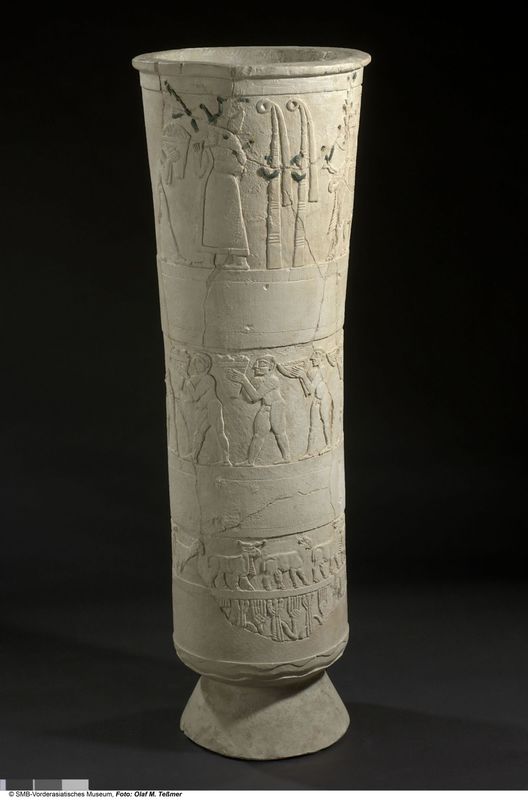Progression of Society
In comparison to the Warka Vase, the Standard is far more intricately constructed with its colorful materials sourced from the ends of the known world and more detailed registers. The difference between the two artifacts is particularly significant because it evidences the development of the state in way that had not existed before. Even a cursory analysis of the Standard clearly suggests a hierarchical, class system indicative of a stratified and potentially coercive society. Only using the images on the Standard itself, we can see that this society adheres to some of Michael Mann’s key tenets of a stratified society – social organization, agriculture, instruments of labor, social relations of production and military power among others.
Agricultural development is of course necessary to sustain a sedentary society, but as mentioned earlier, it is perhaps the most fundamental of these tenets in the development of a stable society. Mann argues, “The general capacities of human beings faced with their earthly environment gave rise to the first societies - to agriculture, the village, the clan, the lineage, and the chiefdom- but not to civilization, stratification, or the state.”[1] Indeed, agriculture does not give rise specifically to the state, yet it is an instrumental step in the process, one that the Standard clearly depicts.
The next step in the process toward the development of a stratified society is the development of a more rigid social organization that places people in various roles along a hierarchical chain. Mann describes this step as a “a drift toward greater fixity of settlement and organization, the core of the evolutionary story. Fixed settlement traps people into living with each other, cooperating, and devising more complex forms of social organization.”[2] This social organization is the core of the evolutionary story because it permits the other factors necessary for the emergence of a stratified state – the development of instruments of labor, the social relations of production and consolidated military power. The Standard clearly shows a high degree of social organization with its three distinct classes of society, each depicted in one of the registers. Thus, the Standard of Ur indicates a progression toward a stratified society if not a developed stratification.
